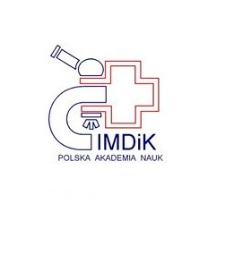- Search in all Repository
- Literature and maps
- Archeology
- Mills database
- Natural sciences
Advanced search
Advanced search
Advanced search
Advanced search
Advanced search

Object
Title: Immunochemical analysis of some proteins in cerebrospinal fluid and serum of patients with ischemic strokes
Creator:
Niebrój-Dobosz, Irena ; Rafałowska, Janina ; Łukasiuk, Mirosława ; Pfeffer, Anna ; Mossakowski, Mirosław Jan (1929–2001)
Date issued/created:
Resource type:
Subtitle:
Publisher:
Place of publishing:
Type of object:
Abstract:
Immunochemical studies of yy-neuron specific enolase (NSE), parvalbumin (PV), S-100 protein (S-100) and acidic fibrillary glial protein (GFAP) were studied in the cerebrospinal fluid and blood serum in 7 patients with ischemic cerebral stroke, aged 57 to 81 years. Cerebrospinal fluid and the first blood sample were taken on the first or second day of the disease. Further blood samples were taken once a week till the end of patients hospitalization, ending by patients discharge or death. Immunochemical identification of proteins under study were performed with Western-blotting technique. It was found that all proteins studied were present in both cerebrospinal fluid and blood serum on the first two days of the disease in small quantities. The blood content of both NSE and PV increased significantly during the first week of the disease. Both proteins disappeared from the blood serum between the second and fourth disease weeks. S-100 protein and GFAP contents in the blood reached significantly high level within the time interval between secondand fifth disease weeks, and remained at a relatively high level till patients' death. In all cases computed tomography study and/or brain autopsy revealed extensive ischemic foci localized within areas supplied by the middle cerebral artery. No clear-cut correlation between extensiveness of the ischemic cerebral damage and the content of the proteins studied in both cerebrospinal fluid and blood serum was found. However, our data indicate that serial studies of the above proteinsin patients with ischemic stroke may be useful in monitoring the progress of the disease, and occasionally in the prognosis at least in some cases.
Relation:
Volume:
Issue:
Start page:
End page:
Detailed Resource Type:
Format:
Resource Identifier:
Language:
Language of abstract:
Rights:
Creative Commons Attribution BY 4.0 license
Terms of use:
Copyright-protected material. [CC BY 4.0] May be used within the scope specified in Creative Commons Attribution BY 4.0 license, full text available at: ; -
Digitizing institution:
Mossakowski Medical Research Institute PAS
Original in:
Library of the Mossakowski Medical Research Institute PAS
Projects co-financed by:
Access:
Object collections:
- Digital Repository of Scientific Institutes > Partners' collections > Mossakowski Medical Research Institute PAS > Publications of the Institute employees
- Digital Repository of Scientific Institutes > Literature > Journals/Articles
Last modified:
Feb 1, 2022
In our library since:
May 30, 2019
Number of object content downloads / hits:
145
All available object's versions:
https://rcin.org.pl./publication/94204
Show description in RDF format:
Show description in RDFa format:
Show description in OAI-PMH format:
Objects Similar
Jankowska-Adamowicz, Lidia
Mossakowski, Mirosław Jan (1929–2001) Weinrauder, Halina
Klatzo, Igor Chou-Lu, Li Long, D. Mossakowski, Mirosław Jan (1929–2001) Bak, A. F. Parker, L. O. Rasmussen, L. E.
Mossakowski, Mirosław Jan (1929–2001) Krajewski, S.
Wołk, E. Józefczak, E.
Dobrowolska, A.
Gorczyca, Elżbieta Krzemień, Kazimierz Łyp, Michał Strużyński, Andrzej

 INSTYTUT ARCHEOLOGII I ETNOLOGII POLSKIEJ AKADEMII NAUK
INSTYTUT ARCHEOLOGII I ETNOLOGII POLSKIEJ AKADEMII NAUK
 INSTYTUT BADAŃ LITERACKICH POLSKIEJ AKADEMII NAUK
INSTYTUT BADAŃ LITERACKICH POLSKIEJ AKADEMII NAUK
 INSTYTUT BADAWCZY LEŚNICTWA
INSTYTUT BADAWCZY LEŚNICTWA
 INSTYTUT BIOLOGII DOŚWIADCZALNEJ IM. MARCELEGO NENCKIEGO POLSKIEJ AKADEMII NAUK
INSTYTUT BIOLOGII DOŚWIADCZALNEJ IM. MARCELEGO NENCKIEGO POLSKIEJ AKADEMII NAUK
 INSTYTUT BIOLOGII SSAKÓW POLSKIEJ AKADEMII NAUK
INSTYTUT BIOLOGII SSAKÓW POLSKIEJ AKADEMII NAUK
 INSTYTUT CHEMII FIZYCZNEJ PAN
INSTYTUT CHEMII FIZYCZNEJ PAN
 INSTYTUT CHEMII ORGANICZNEJ PAN
INSTYTUT CHEMII ORGANICZNEJ PAN
 INSTYTUT FILOZOFII I SOCJOLOGII PAN
INSTYTUT FILOZOFII I SOCJOLOGII PAN
 INSTYTUT GEOGRAFII I PRZESTRZENNEGO ZAGOSPODAROWANIA PAN
INSTYTUT GEOGRAFII I PRZESTRZENNEGO ZAGOSPODAROWANIA PAN
 INSTYTUT HISTORII im. TADEUSZA MANTEUFFLA POLSKIEJ AKADEMII NAUK
INSTYTUT HISTORII im. TADEUSZA MANTEUFFLA POLSKIEJ AKADEMII NAUK
 INSTYTUT JĘZYKA POLSKIEGO POLSKIEJ AKADEMII NAUK
INSTYTUT JĘZYKA POLSKIEGO POLSKIEJ AKADEMII NAUK
 INSTYTUT MATEMATYCZNY PAN
INSTYTUT MATEMATYCZNY PAN
 INSTYTUT MEDYCYNY DOŚWIADCZALNEJ I KLINICZNEJ IM.MIROSŁAWA MOSSAKOWSKIEGO POLSKIEJ AKADEMII NAUK
INSTYTUT MEDYCYNY DOŚWIADCZALNEJ I KLINICZNEJ IM.MIROSŁAWA MOSSAKOWSKIEGO POLSKIEJ AKADEMII NAUK
 INSTYTUT PODSTAWOWYCH PROBLEMÓW TECHNIKI PAN
INSTYTUT PODSTAWOWYCH PROBLEMÓW TECHNIKI PAN
 INSTYTUT SLAWISTYKI PAN
INSTYTUT SLAWISTYKI PAN
 SIEĆ BADAWCZA ŁUKASIEWICZ - INSTYTUT TECHNOLOGII MATERIAŁÓW ELEKTRONICZNYCH
SIEĆ BADAWCZA ŁUKASIEWICZ - INSTYTUT TECHNOLOGII MATERIAŁÓW ELEKTRONICZNYCH
 MUZEUM I INSTYTUT ZOOLOGII POLSKIEJ AKADEMII NAUK
MUZEUM I INSTYTUT ZOOLOGII POLSKIEJ AKADEMII NAUK
 INSTYTUT BADAŃ SYSTEMOWYCH PAN
INSTYTUT BADAŃ SYSTEMOWYCH PAN
 INSTYTUT BOTANIKI IM. WŁADYSŁAWA SZAFERA POLSKIEJ AKADEMII NAUK
INSTYTUT BOTANIKI IM. WŁADYSŁAWA SZAFERA POLSKIEJ AKADEMII NAUK




































